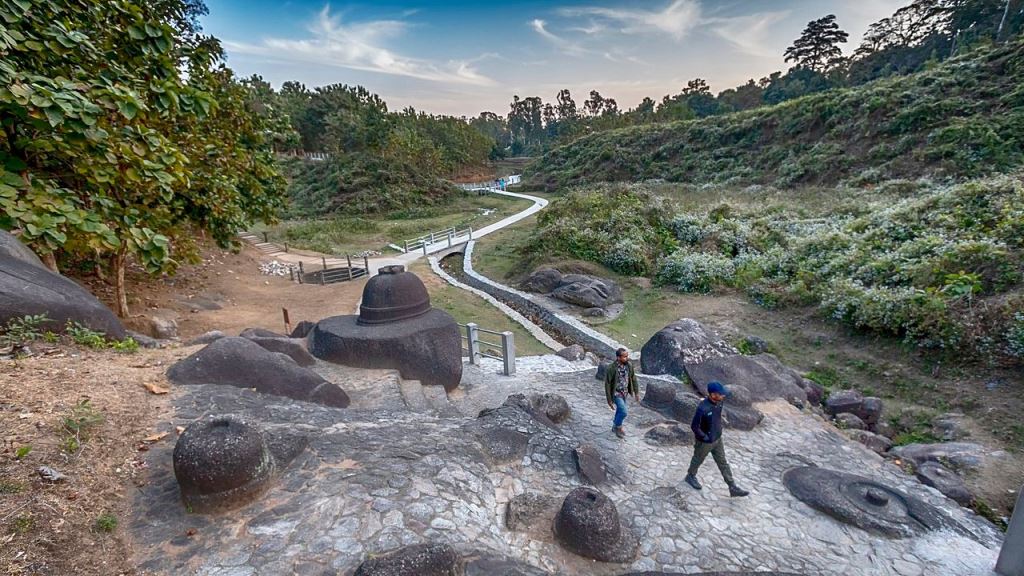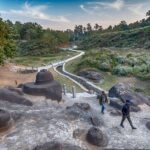Hello people, hope you all are good and safe. Isn’t it worthwhile to know about a place before visiting? Here is your ultimate guide to yet another striking place of Assam.
Often referred to as the land of Blue hills and Red river, Assam is endowed with not only a wide range of flora and fauna but also a rich history. The term Assam is believed to have originated from the word Ahom. The Ahoms were the rulers of the Brahmaputra Valley from the 12th to the 18th centuries. After the advent of the British rule in Assam, the term “Assam” was originally used for the tract of land ruled by the Ahoms. It was subsequently used to refer to the six districts of Brahmaputra Valley, Manipur, Surma Valley and the nearby Hill Districts.
The Hindu epics, the Pauranik and Tantrik Literature contain numerous references to ancient Assam. There is a constant mention of the great kingdom of Kamarupa of North East India in the Mahabharata, the Kalika Puran, the Vishnu Puran and the Jogini Tantra. Travellers and historians have been quite marvelled at the natural beauty of the region. Many of them have described about the fertile soil of the Brahmaputra Valley and have been enthralled by the damp and relaxing climate. They were amazed by the great prosperity and degree of civilization excelling in wide variety of arts.
One such place in Assam that caught the interest of travellers and historians, alike, since time immemorial is Goalpara.
Situated 134 kilometres to the west of Guwahati, Goalpara is a famous district of Assam. The name Goalpara is believed to have originated from the word “Gwaltippika” meaning Guwali village, or ‘The village of the milk men’. The word ‘para’ means village in local dialect. The history of Goalpara is several centuries old. Sir Edward Gait in his book on the history of Assam mentioned that the erstwhile capital of the state of Kumar Bhaskar Varman was either in Goalpara or Coochbehar based on the Chronicles of the Chinese traveller Hiuen Tsang. It was a princely state ruled by the Rajbongshi kings who were also the rulers of the undivided kingdom of Coochbehar. The Goalpara district came under British Rule in 1765. The British annexed Assam in 1826. The original Goalpara district was first created in 1822 A.D. by David Scott- an employee of East India Company, who was the first Commissioner of newly created North East Rangpur district Hd. Qr. at Rangpur town(now in Bangladesh) and newly created Goalpara district was also tagged with North-East Rangpur district for administration. The erstwhile Bijni Kingdom’s area which included the undivided Garo Hills district area also constituted the original Goalpara district area in 1822. In 1866 Garo Hills was separated from Goalpara district area and in the same year a new district named “Greater Koch Behar” was created and the residual portion of Goalpara district was withdrawn from Rangpur and tagged with Koch Behar. The British Government created the Assam Valley Province in 1874. The Goalpara district was made a part of the Assam Valley Province with its headquarters in Dhubri. This state of affairs continued during the British Reign. In 1983 the Goalpara District was carved out by integrating the Goalpara Sadar sub-division and North Salmara Civil sub-division. The district was again reorganised in 1989 wherein the North Salmara Civil Subdivision was merged with the Bongaigaon District. Now it consists of an area of 1824 square km bounded by West and East Garo Hill districts of Meghalaya on the South, Kamrup district on the East, Dhubri district on the West and mighty river Brahmaputra all along the Northern boundary.
Goalpara is bestowed with natural scenic beauty and a treasure trove of historical sites. It is home to stunning landscapes, rich culture and ancient structures. The Hulukanda Hill, with various kinds of waterfowl and monkeys located in the heart of Goalpara, on the bank of the Brahmaputra River, is a major sight of attraction in the town. Some other water bodies are Hashila beel, Kumri beel, Dhamar Risen beel and Urpad Beel. The Urpad Beel is a natural space for migratory birds from the months of October to March. A rippling landscape is created by the evergreen forests present on its low hills.
The most significant archaeological site and a place of historical importance in Goalpara is the Sri Surjya Pahar. The cultural heritage of the three ancient Indian religions of Hinduism, Buddhism and Jainism are on full display at this place. The Dadan Hill consists of a Shiva Temple on its top. The temple was built by Dadan, a general of the army of King Bana of Sonitpur. Many mythological stories of the past are related to this mystical hill.
Pir Majhar, a tomb of a saint named Hazarat Sayed Abul Kashem Kharasani, a saint respected by Hindus and Muslims alike is situated at the heart of the Goalpara town.
Sri Tukreswari hill and Paglartek Baba at Barbhita are other notable places of attraction in Goalpara District.
So, if you are planning to visit the beautiful state of Assam, make sure to explore the historical and ancient district of Goalpara and don’t forget to enlighten your friends and family with our ultimate guide.
Stay safe
Until the next time.

